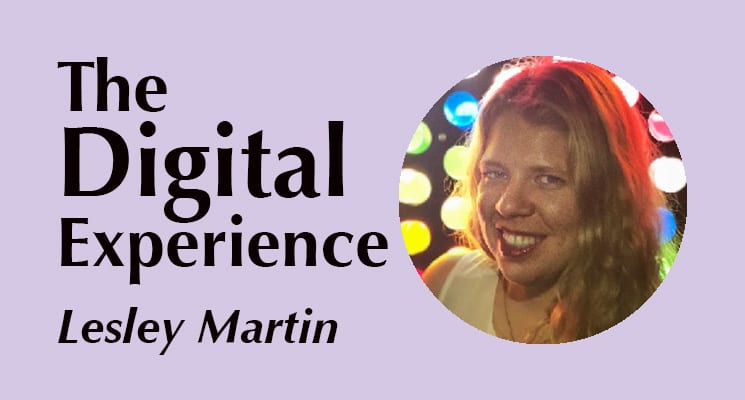“Hey Betty, What’s the WiFi Password?”
by Lesley Martin
According to Digital Go, 2 billion messages are sent between people and businesses monthly. From phone calls to social media and web messengers, people are communicating one-to-one with businesses like never before. BizBash Media Inc., a media company and resource for the professional event industry, found that they were communicating with customers on seven channels–from phone calls to multiple social media networks. Many of the questions they received were repetitive and mundane–questions that could be answered if people actually read the FAQs. With the intent to improve productivity with technology, BizBash worked with EventBots by Sciensio to create a chatbot and named her Betty.
 If you’re attending a BizBash event, you can text Betty your questions regarding registration, location and other FAQs. Her AI responds to 90+ user needs that can be asked more than 3.2 million ways. She’s available 24/7, never has a busy tone and answers within a few seconds. To put that in perspective, let’s compare to a call center, where the global metric for average speed to answer is 28 seconds, the average call duration is four minutes, and the percentage of users who hang-up before an agent answers is 5-8 percent.
If you’re attending a BizBash event, you can text Betty your questions regarding registration, location and other FAQs. Her AI responds to 90+ user needs that can be asked more than 3.2 million ways. She’s available 24/7, never has a busy tone and answers within a few seconds. To put that in perspective, let’s compare to a call center, where the global metric for average speed to answer is 28 seconds, the average call duration is four minutes, and the percentage of users who hang-up before an agent answers is 5-8 percent.
“The beauty of the bot is that you have one bot who’s having a one-to-one conversation with thousands of people, and they’re having the same conversation every time,” says Nicole Peck, executive vice president of BizBash Media. “Additionally, the EventBot keeps a record of every conversation, which can be used for data analysis and continual improvements.”
Chatbots are not new, but rapid advancements in machine learning and natural language processing (or the machine’s ability to understand and interpret human language) have made interactions much more sophisticated. Betty can accurately interpret the user’s question and deliver the correct response with an amazing 96 percent accuracy. The global metric for First Call Resolution in a call center is 70-75 percent.
Advancements in AI combined with the ubiquity of text messaging have accelerated the growth of chatbots in the last two years. “[For the show organizer], SMS is the lowest friction medium to communicate with attendees,” explains Robert Caldwell, founding partner and chief revenue officer at Sciensio, the company behind Betty that deploys fully functioning chatbots for events. “They’ve already delivered this information via email and print, but you won’t look at that until you need it. This is another channel that delivers everything to you in less than three seconds. SMS has a 98 percent open rate. That makes this an incredibly powerful channel to which everyone has access.” It’s also a way for show organizers to communicate in real-time with their attendees, such as when it’s okay to re-enter the building after a fire alarm goes off.
Additionally, Sciensio delivers bots that can be programmed in the brand voice. For example, Betty was programmed to have a personality. Her responses are friendly, containing lots of emojis with a hint of snark. Betty not only has a name and voice, but a face as well. “As someone with a marketing background, I felt that it was important to give her something friendly, loving, enjoyable to look at and made you smile,” says Peck.
Research by eMarketer reveals that “more than 35 million Americans use voice-activated, personal assistants at least once a month.” While the tech giants are pouring money into chatbots, the technology is becoming accessible to all-sized companies. A chatbot for an event can start at $250 and go live within an hour. More robust bots cost several thousand and can be deployed within six weeks. For BizBash, Sciensio recently delivered their sixth Betty for BizBash.
Yet relationships are at the core of the face-to-face industry. So in our increasingly robotic world, do bots hinder the human connection? “Not at all,” says Caldwell. “Chatbots are answering the non-value add questions that are important to the customer at the moment, but not unique or of long-term consequence. That allows people to resolve anxieties and needs immediately which opens them up to continuing conversation.”
As bots become readily available as customer service solutions, businesses need to know how they can intelligently leverage this technology to save time and money. Caldwell adds, “It is really easy to build a bot, but it is really, really hard to build one that works. We tell our clients to focus on actually solving a business problem when they deploy bots, or any technology.” In this age of technology acceleration, that is pretty good advice for just about any solution.
 Lesley Martin is a writer and digital producer working in San Francisco, Calif. Connect with her at www.linkedin.com/in/lesleymartin.
Lesley Martin is a writer and digital producer working in San Francisco, Calif. Connect with her at www.linkedin.com/in/lesleymartin.
This story originally appeared in the November/December issue of Exhibit City News, p. 18. For original layout, visit https://issuu.com/exhibitcitynews/docs/ecn_flipbook_novdec2018






























